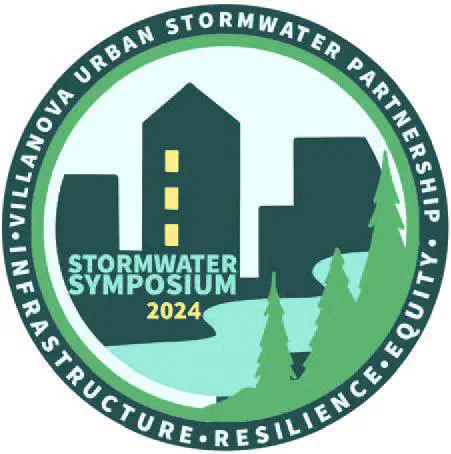Stormwater Management Facilities in Coastal Areas with Respect to Climate Change
 Image credit: VUSP
Image credit: VUSPAbstract
Introduction. Stormwater and stormwater management systems are important infrastructures for safeguarding human and ecosystem health because they are conduits for the safe transportation and stormwater treatment before disposal into receiving bodies. However, unprecedented changes in rainfall patterns, projected sea level rise (SLR), rising shallow groundwater levels, and saltwater intrusion in coastal environments pose threats such as weakening of vertical gradients, corrosion of pipes, disruption of treatment system integrity and water infrastructure to these infrastructures (Cao et al., 2020; Flood & Cahoon, 2011; Hummel et al., 2018; Nicholls et al., 2007). In response to these emerging challenges, it becomes imperative to thoroughly assess the existing stormwater management systems and then develop future-proof design strategies that accommodate the anticipated impacts of climate change. This paper aims to draw connections between modeling conducted by the research team at the University of Delaware and practical engineering solutions implemented by Straughan. In both settings, we present examples of how to incorporate the latest projections for SLR and changes in rainfall patterns into the design process while also considering the effects of groundwater dynamics on these designs. Methodology. Groundwater Flow and Stormwater Management Modelling. For our study, we address climate change impacts on stormwater and groundwater systems in Bowers Beach, Delaware, by coupling EPA’s Stormwater Management Model (SWMM) and USGS MODFLOW, a groundwater flow model. SWMM is used to simulate surface runoff and the hydraulic performance of stormwater infrastructure under varying rainfall conditions, particularly the engineered components like storm drains, pipes, green infrastructure, and sanitary sewers. Despite SWMM’s capabilities, its limited functionality for groundwater level analysis and particularly 3-D, variable density groundwater flow (i.e., from saltwater intrusion) is why we are also integrating MODFLOW, renowned for its detailed groundwater dynamics simulations especially relating to SLR. This coupling enhances our ability to examine the complex interactions between SLR-induced groundwater rise, rainfall-induced runoff and the existing stormwater infrastructure, highlighting potential risks of capacity exceedance due to multiple interacting factors. By leveraging SWMM for runoff and infiltration analysis and MODFLOW for groundwater level simulations, our approach offers a nuanced understanding of how climate change variables—specifically SLR and varying rainfall patterns—can impact stormwater management strategies. This integrated model framework provides critical insights for developing resilient infrastructure designs capable of mitigating the effects of climate change. Risk Assessment Factors. When designing stormwater management infrastructure in coastal communities, the design teams assess the effects of rising coastal water levels and intensifying rainwater. Rising coastal water levels lead to higher groundwater tables, weakening of vertical gradients and saltwater intrusion in groundwater, which results in shallow, more saline groundwater. Intensifying rainfall leads to increased stormwater runoff, which can lead to stormwater and stormwater management infrastructure failure. To properly design resilient stormwater infrastructure, design teams have assessed these risks separately using modeling. The eventual design is therefore supported by numerous background calculations and considerations regarding climate change which creates improved resilience. Key Findings. Through integrating the SWMM and MODFLOW models, our ongoing study at Bowers Beach aims to assess the impacts of sea level rise (SLR) on stormwater and groundwater systems. We anticipate pinpointing critical interactions between rising groundwater levels and stormwater infrastructure by simulating various SLR scenarios. We will compare groundwater elevation against stormwater pipe elevations across different time steps, thereby identifying potential vulnerabilities within the system. Another key aspect of our analysis involves examining how surface runoff and groundwater inflow into these pipes vary in response to changing SLR and rainfall patterns. These insights will enable us to identify which parts of the stormwater are most susceptible to climate change impacts. With this information, infrastructure designers will have a foundation for making informed decisions regarding adjustments in pipe sizing, optimal installation depths for new stormwater management and other infrastructures, and other vital management strategies. When designing for coastal communities in Delaware and Maryland, the Straughan team has found methods that help to create designs resilient to the effects of climate change. The Straughan team will present stormwater management case study projects as part of the presentation to support these key findings. We will focus on practices that work most effectively in these environments as well as innovative solutions to enhance practices. Due to the immediate effects of sea level rise and rainfall intensity in coastal communities, these projects must be designed especially with considerations for groundwater interactions and flooding. Recommendation. Future stormwater management projects in coastal communities must use the most current methods of climate change modelling to inform design. The compounding effects of climate change in coastal communities can be seen more directly and more severely than in their inland counterparts. Due to these tangible effects, planning for future scenarios and resilience is an important part of stormwater management in coastal communities.